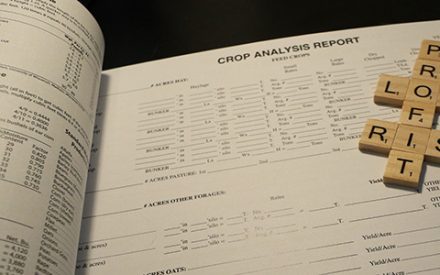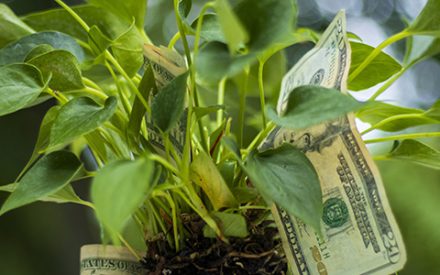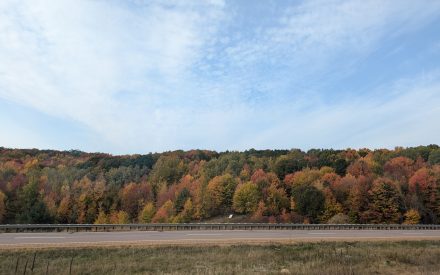Video Summary
Join Josh Bendorf, the climate outreach specialist with UW–Madison Extension, as he provides a snapshot of this week’s weather conditions impacting agricultural activities across Wisconsin. Josh recaps recent precipitation trends, soil moisture levels, and temperature forecasts across the state. Discover how these weather patterns impact soil conditions and crop planting, and get insights into the upcoming weather outlook for the end of April and early May. Stay informed and prepared for the growing season with this essential update for farmers and ag professionals in Wisconsin.
Resources
- Wisconsin Ag Weather Outlooks
- Wisconsin State Climatology Office
- Crop Conditions & Soil Moisture Analytics (NASS)
- Runoff Risk Advisory Forecast (WI-DATCP)
Transcript
0:05
Well, thanks, Chris and good afternoon, everyone.
0:08
Thanks for tuning into the webinar today.
0:10
My name is Josh Bendorf.
0:11
I am the new Climate Outreach Specialist with UW Extension as part of the Wisconsin State Climatology office.
0:18
And I’m going to be giving you a brief update, just a snapshot of this week’s Wisconsin Ag weather outlook as part of the Badger Crop Connect series here that we do.
0:29
And I encourage you to check out the larger report which should be going out either later today or early tomorrow.
0:38
So just doing a quick recap of precipitation from last week.
0:42
This is this table here is showing precipitation statistics by climate division in the state of Wisconsin.
0:48
So we can see there’s these nine different climate divisions that we’ve divided up throughout the state.
0:53
And these are just showing some of the statistics, both a precip that we saw last week and also since we’ve since January 1st.
1:01
So we take a look at the third column in this table that’s precip.
1:05
I put these numbers together back on Tuesday morning, so they’re a few days old by this point.
1:09
But looking back to roughly the last week, it was an active week for precip pretty much across the whole state.
1:15
We saw anywhere from an inch, half inch to over 2 inches kind of to over 2 inches in that West central part of the state of Wisconsin.
1:26
And this has helped make up for some precip deficits in part of the state that we’ve been seeing since January 1st.
1:32
If we look at the second column in this table, this is the percent of normal precip looking at year to date, January 1st to April 14th.
1:40
So before this past week, where are we sitting in terms of our precip and how does that compare to normal?
1:46
We see that those numbers in red, they are showing climate divisions where we were seeing a precip deficit or we haven’t been.
1:53
We didn’t see as much precipitation as we usually see in these regions.
1:58
In the case of climate division #7 that far southwest corner where I live, we were at about 80% of average back on April 14th.
2:08
But thanks to the rainfall that we received during this past week, now we’re seeing that six out of nine of our climate divisions are above normal.
2:18
Those numbers showing up there in green.
2:20
And the ones the southern climate divisions that are still below average precipitation have made-up some ground.
2:26
So they’re roughly about 90 to 95% of average.
2:29
So we’re either near average or above average across the state.
2:34
So looking at station by station data over the past 30 days, precip totals over the past 30 days were highest from the West Central region up through the Northeast.
2:45
If we look here at this map here on the left, we see kind of from that area around La Crosse going up through Wausau, Stevens Point, up through the UP.
2:54
That was kind of our area of highest precipitation.
2:57
We had totals in that band of counties anywhere from about four to six plus inches of precipitation.
3:04
Part of that was from what we saw last week and part of that was also from that late March winter storm that was that really impacted the northern parts of Wisconsin as well as the UP of Michigan.
3:15
We also kind of have this area here by Waukesha and Milwaukee that’s showing up with some higher precipitation totals.
3:21
So how does this compare to average through that northern central part of the state running anywhere from about 150 to 200% of average, so well above normal precipitation for this.
3:35
And this is comparing it to a 30 year normal.
3:37
So 1991 to 2020 is the period we’re comparing this to.
3:42
But if you look at the southern part of the state, we’re seeing anywhere from about maybe 2 to 3 inches of precipitation as well as up in the north, northwest part of the state as well.
3:51
Those areas are either near average or slightly below average, most below average right around that state line area around the Illinois border.
4:01
So where are we sitting for precipitation so far year to date?
4:05
If you look at the the map there on the left, anywhere roughly from about 5 to 8 inches of precipitation across the state with localized higher and lower.
4:13
And the southern part of the state, like I mentioned before, my previous slide has been kind of lagging behind the normal precipitation total year to date, whereas the northern and central parts of the state are running a little bit above average.
4:30
So what does this mean for soil moisture?
4:32
I took these screenshots from the Wisco Net website morning of April 22nd.
4:38
These are showing 4 inch, 8 inch, and 20 inch soil moisture.
4:42
So these numbers might not necessarily mean a lot to you.
4:45
These, this is a volumetric soil water content.
4:48
So volume of water per volume of soil.
4:51
What is that ratio?
4:53
But we have this product from the NASA sport model which compares how soil moisture is right now and compares it to previous years.
5:03
Now this isn’t a measured product, this is on satellite based estimates, but basically it’s comparing how does April 2025 compared to past late April’s in terms of wetter than average or drier than average or near average.
5:18
What we’re seeing is at the central part of the state where we’ve been seeing more precipitation over the last few weeks.
5:23
That area is trending much above the the the climatological average for that area.
5:32
Most of the state is in that gray shading, which is kind of a near average roughly the soil moisture we would expect for this time of year.
5:38
That west central part of the state was last week when I put these slides together was more in that yellow and orange color that it was running drier than average.
5:48
But thanks to that rainfall that we got last week, that area is now estimated to be roughly near normal conditions.
5:55
But we’re still seeing that air, those that southern part of the state showing up as drier than than normal.
6:03
So looking at the drought monitor now, drought is pretty much eliminated in the state.
6:09
The only area that’s still lingering in D1 drought is the far southwest part of the state, running about 2.6% of the state’s covered in drought right now.
6:22
Just a reminder that the the yellow color, the D0 is abnormally dry, not technically drought but kind of heading in that direction.
6:29
And we’re we’re seeing about 30 to 33% of the state is, is covered in D0.
6:35
The map there on the bottom shows where compared to last week we had improvements in drought in that NW North Central part of the state.
6:43
And then in the Southwest we saw about one class reduction in drought coverage.
6:49
And we can see since roughly about mid to late March that we’ve been seeing some pretty drastic reductions in drought coverage in the state.
6:58
Pivoting now to temperatures, these, this, these are temperatures from the past seven days, average temperature range of mid to upper 40s to low 50s in the southern part of the state.
7:11
And, and then in the northern part of the state, upper 30s to low 40s.
7:15
This is this is, these temperatures are roughly seasonal for this time of year.
7:19
Most of the state was within ±2° of the climatological average, trending more above average in the east and more below normal as you got further west and further north, but kind of right around that ±2°F.
7:35
So pretty seasonal for this time of year.
7:39
Chris showed this in her slides.
7:41
But soil temperatures at different depths.
7:44
We’re running right now at 48 and 20 inches from the low to mid 30s in the north to mid, mid to upper 40s in the South.
7:55
So cooler soil temperatures right now and planting is underway for corn and soybeans, but has been somewhat limited by cool and wet soil conditions that we’ve been seeing recently, but it’s nonetheless underway.
8:14
But I just wanted to make note too that we’re not quite out of the woods yet in terms of getting a freeze.
8:19
So these maps here show the probability of getting a freeze on or after the 22nd of April both at 32°F and 28°F.
8:29
For most of the state, there is a high likelihood that there’s going to be a a low temperature of 30 degree 32° or lower across most of the state.
8:40
This is based on what what has been observed in the past.
8:44
And then for 28°F, kind of about a 50-50 chance with less likelihood of this happening in the southern part of the state as well as along the Mississippi River and Lake Michigan.
8:59
So now going to the outlook, 7 day precipitation forecast.
9:03
Again, this map is a little bit old.
9:05
This would include precipitation that we got both on Tuesday and Wednesday.
9:10
But nonetheless, it is yet another active week that is forecasted for precip for the state, kind of focused in that same area where we saw a precip last week, that southwest, southwest, central part of the state, multiple rounds of precip this week into early next week.
9:26
Be sure to check your local forecast for timing and forecasted totals.
9:32
Potential again to see over an inch of new precipitation in the west with lesser chances as you get further north and further east.
9:40
Looking a little bit further out, as we wrap up April and head into the first part of May, temperatures are likely to be above normal.
9:47
If we look at the map on the left, we see a lot Wisconsin’s either in that orange or dark orange color.
9:53
That’s indicating that temperature probabilities are leaning towards being more above average.
9:57
And then precipitation is showing a lean towards above average as well.
10:01
So a little bit warmer and wetter to wrap up April as we head into the first part of May.
10:08
And we’re, we’re kind of uncertain right now for the rest of the month of May because we right now our probabilities for temperature and precipitation are showing equal chances for above, near or below normal.
10:19
So we can’t really say with any certainty right now as to what the lean of precipitation and temperatures for the month of May are going to be.
10:27
So stay tuned for more updates on this.
10:30
And with that, I just want to put our contact information up here.
10:33
Again, we have a great team of folks working on these weather updates every week as well as providing agronomic recommendations for a wide range of cropping systems.
10:43
So yeah, I think I’ll pass it back to Chris now and I’ll be happy to take any questions.
Badger Crop Connect
Timely Crop Updates for Wisconsin
Second and fourth Thursdays 12:30 – 1:30 p.m.
Live via Zoom

 ▶ Fall 2025 Financial Assistance for Producers
▶ Fall 2025 Financial Assistance for Producers ▶ Fall 2025 Ag Policy Update
▶ Fall 2025 Ag Policy Update ▶ Fall 2025 Corn and Soybean Market Outlook
▶ Fall 2025 Corn and Soybean Market Outlook ▶ November 6 Ag Weather Outlook for Wisconsin
▶ November 6 Ag Weather Outlook for Wisconsin


